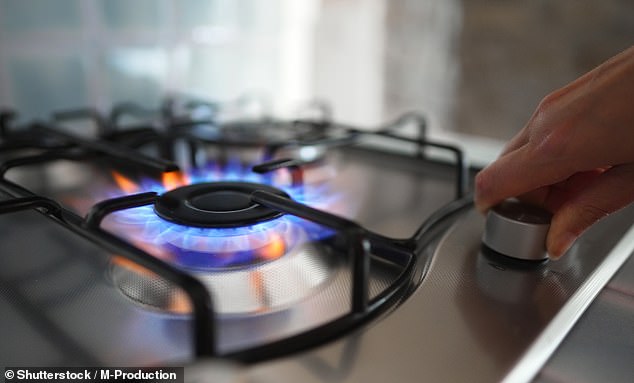Scientists have revealed that a kitchen appliance found in millions of American homes raises cancer risk, especially for children.
A new study found that gas stove emissions result in a significantly increased cancer risk that is up to 16 times greater for kids than adults.
The Stanford-led team investigated the health impacts of the top five percent highest benzene-emitting gas stoves, which are used by 6.3million Americans.
Benzene is a known carcinogen that has been linked to multiple types of cancer, particularly leukemia. The World Health Organization (WHO) states that there is no safe level of long-term exposure to benzene.
These stoves emit benzene gas as they burn propane or natural gas. When inhaled, this toxic chemical causes changes to cellular function that can result in cancer and other health issues.
The team looked at benzene exposure in types of homes, finding apartments had the highest cancer risk, followed by attached homes, manufactured homes and then detached homes when there was high stove use and no ventilation.
According to the researchers, in non-ventilated apartments with high gas stove use, up to 16 out of every one million children could develop cancer from long-term benzene exposure.
For adults living in the same conditions, the risk is also significant, with up to eight out of every one million potentially developing cancer.

Gas stoves emit benzene as they burn propane or natural gas. When inhaled, this toxic chemical causes changes to cellular function that can result in cancer and other health issues
This is well above the WHO’s safety limit for the carcinogenic effect of benzene, set at one case per one million people, which suggests these stoves may be driving a public health crisis.
Based on the fact that 6.3 million people in the US may be exposed to elevated benzene from gas stoves, the researchers estimate there could be 16 to 69 extra leukemia cases per year.
The team defined medium usage as using one burner in the morning and two in the evening for 30 minutes each, without the oven, reflecting typical daily cooking.
High usage involved more intense cooking: two burners in the morning, four in the evening (41 minutes each), plus oven use at 350°F for over two hours.
The researchers used past studies to estimate how much benzene is released during low, medium, and high cooking scenarios, then modeled exposure levels across different types of homes and ventilation scenarios.
By analyzing all these factors, the team determined how much benzene people who use these stoves are breathing in, depending on the room they’re in, how long they stay there and how often they cook.
The researchers found that in non-ventilated settings with high stove use, benzene levels in kitchens peaked between 1.7 and 3.35 parts per billion (ppb), which is well above California’s safety limit of 1 ppb.
But this toxic pollutant isn’t just found in kitchens. After one to two hours of cooking, the researchers found that it wafts into other parts of the home too, including bedrooms.

The study found that cancer risk was significantly elevated in homes with ‘medium to high’ gas stove usage and inadequate ventilation, and the risk was four to 16 times higher for kids
This is particularly dangerous due to the amount of time people spend in bedrooms.
Apartments, especially small ones, had the highest bedroom concentrations at 3.3 ppb, but other housing types showed alarmingly high levels too, all of which were above the 1 ppb safety limit.
Proper ventilation significantly reduced these exposure levels. Using a high-efficiency stove hood reduced daily kitchen benzene levels by 0.21 ppb on average, and keeping all windows open throughout the day cut levels by up to 99 percent.
Even having windows open for just a few hours per day reduced benzene exposure by up to 42 percent.
Under low or medium stove use most homes stayed below the 1 ppb threshold, even without sufficient ventilation.
Based on these exposure levels, the researchers calculated the cancer risks for both adults (aged 18 to 65) and children (aged one to 17).

For every one million kids living in non-ventilated apartments where gas stove usage is high, up to 16 of them could develop cancer due to benzene exposure, the researchers found
The researchers found that ventilation reduced, but did not eliminate, cancer risk. Only the extreme case of keeping windows open all day brought risks close to acceptable levels.
Based on these findings, the team estimated 16 to 69 excess cases cased of leukemia per year among Americans who have these stoves and fall into the ‘high-use’ category. What’s more, these cases are mostly among children.
For those who fall into the ‘medium-use’ category, they estimate an excess 10 cases per year.
Although these numbers are based on estimates rather than actual case data, they point to a significantly elevated health risk for gas stove users, especially for kids.
‘Overall, this study underscores the importance of effective ventilation and highlights the need for policies and strategies to mitigate benzene exposure from gas stoves, particularly for vulnerable populations such as children,’ the researchers concluded.
This article was originally published by a www.dailymail.co.uk . Read the Original article here. .

